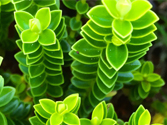Application and development of bioplastics
Due to oil and gasoline prices are low, many companies will choose by reducing costs to increase profits, and abandoned more innovative technology of environmental protection, actually such status quo against the development of biological and biodegradable plastic. Still, demand for bioplastics is growing and investment continues to pour in. This is because the material is in line with the vision of enterprise development, and in the context of sustainable development policies, it has the characteristics of diversified functions, correctness of arguments and superiority of solutions.
I. application and development of biological plastics
Why are more and more companies and countries interested in bioplastics? What is driving it? Two salient features of the material are sufficient to answer these questions. On the one hand, the source of bioplastics is renewable raw materials. On the other hand, bioplastics have biodegradability, the latter being its main characteristic. These two properties are independent of each other, in different directions, and their respective representative materials are not competitive with each other. In a nutshell, "bioplastics" seem arbitrary and confusing. Both of these features are extremely important.
Biological plastics
In the specific category of polymer, PET with a biomass base of 30% is an outstanding representative of the leading position in production capacity and market. Nova research has published professional data on the production capacity of bioplastics worldwide in recent years, which are also used by the European bioplastics association in its published data.
If MEG can be produced from biological materials, then almost every manufacturer can make PET with a biological base of 30%. At present, the market can supply about 300,000 tons of biological basis MEG, and can produce about one million tons of PET with a biological basis content of 30%. Some of them are used in beverage bottles by Coca-Cola. In fact, Coca-Cola has been working on the project since 2009. Since then, the company has produced more than 40 billion beverage bottles containing biopet, reducing carbon dioxide emissions by more than 300, 000 tons.
In the spring of 2015, Coca-Cola showed off the first bioplastic beverage bottle using 100% terephthalic acid (PTA). However, the production of PTA is not economical enough for start-up companies. At present, they are still testing various comprehensive methods. The biological PET material is easy to recycle and is suitable for long-term application, which meets the high demand of the plastics industry in the future. Currently, the number of users and application fields of PET are steadily increasing, covering medical packaging, automobile parts, outdoor textiles and so on.
Polyethylene furanone (PEF)
After the success of PET, polyethylene furanone (PEF) is still in development. The material is made of MEG and furanedioic acid (FDCA), which is 100% biological base from the beginning chain segment. Avantium in Amsterdam in the Netherlands, is a technology leader in the field of FDCA production technology company, located in ludwigshafen, Germany basf, European companies announced in March of last year in Antwerp, Belgium, create a new FDCA production plant, production capacity of 50000 tons/year. Mitsui, a Japanese firm based in Tokyo, has also signed a long-term supply contract.
Compared with PET, PEF is a material with stronger barrier to CO2 and O2. Because of its higher mechanical strength, it can produce thicker and thinner packing wall, thus reducing the packaging weight of film and bottle. Based on its functional, environmental and cost advantages, PEF is recognized as a promising new material in the bioplastics market.
polyethylene
Biological polyethylene (PE) has entered the market for many years. Located in Sao Paulo, Brazil, Braskem company, is currently the only success in the field of commodity competition difficult position the polymer for quality products maker, does not give its new features, its advantages are less carbon emissions. Its customer base is growing and distribution channels are continuing to develop. Food manufacturers, who used to avoid bioplastics when it came to packaging between food and non-food products, see a new opportunity (see chart 3). For manufacturers, a capacity of 200,000 tonnes a year is an important first step, and further investment is now under consideration. Although biological PE materials has also been applied to the products of science and technology, such as cable outer or sewer, but the main purpose of polyolefin is still food packaging field, such as cosmetics or consumables packaging
Worthy of attention is the leader of the packaging, such as the rush of the RPC group, Australia's hawthorne an Amcor co, Helsinki, Finland, Stora Enso group and du track of Germany Gerresheimer company, are extremely seriously "biological basis", and use it as the future development. The international company TetraPak, based in pii, Switzerland, plans to market about 100 million 100% bio-based TetraRex boxes in early 2016, made from biological PE materials produced by Braskem
polyamide
Excellent tolerance and high elasticity are the basic characteristics of many biological polyamide (PA). Like PA10 and PA11, which have been on the market for decades, the new PA4 and PA5 are attracting market attention for their special properties, such as temperature stability, chemical resistance and dimensional stability. Traditionally, PA has been used for special applications in the automotive field, while biopa has also conquered consumer products such as outdoor clothing, sneakers and spectacle frames. Main polymer manufacturers, such as wichita, KS/the United States Invista S.A.R.L., Netherlands DSM engineering plastics company of haier company, Essen, Germany Evonik industries, in order to further expand PA monomer composition range, is actively cooperate with various biotechnology company, such as Canada/America menlo park Calysta company, Shanghai, China, cathay Pacific biological technology co., LTD., Malaysia selangor Emery Oleochemicals group and Canada/carlsbad Verdezyne company in the United States.
Other bioplastics
Customer demand drives the development of sustainable high performance plastics. High transparency, resistance to scratch "Durabio" synthetic materials won the 2015 "bioplastics award", the creature of polycarbonate (PC) from different sorbitol, by the French Lester lang Roquette Freres company, Japan mitsubishi chemical corporation in Tokyo and Osaka, Japan's sharp corporation joint manufacturing.
The customer's requirements for the excellent performance of bioplastics have also promoted the development of polypropylene terephthalate (PTT), which is especially suitable for the application of elastic process textile fibers (see table 1). If thermosetting plastics are taken into account, the number of derivatives will increase. Biological polyurethanes (PU) or polyepoxies are now being used in many different applications with promising prospects (see figure 6). Interested companies can take advantage of a growing number of commercially available biological-based monomeric structural units, mainly diols or polyols, with as much room for improvement as the biological component.
The use of bioplastics in the toy industry is also increasing. Lego, a toy company based in beilon, Denmark, said in a 2015 statement that only sustainable raw materials would be used to produce products by 2030, equivalent to 70,000 tons of plastic per year. Finding a replacement for fossil ABS is the next step, and reducing carbon emissions must be done. Lego has set up an innovation center and has partnered with biopolymer manufacturers and the world wide fund for nature. Although bioplastics have been used in toys, the market is still in its infancy.
Biodegradable plastics
Related to its chemical and physical structure, many polymers have biodegradable properties, of which polyester is the largest branch. The complex polymer material polylactic acid (PLA) has numerous structures, including one that is durable. MN/ NatureWorks of minitongka is the leader among many manufacturers, with a capacity of 150,000 tons per year, far behind its competitors. At present, many companies are trying to improve the manufacturing process or production process. Corbion, based in Amsterdam, the Netherlands, has announced plans to build a 75,000 tonne per year plant in Thailand, which is expected to be operational by 2018.
The PLA is now sold around the world and is mainly used in packaging, fiber and film, with the vast majority of the complex taking a significant market share. The functional material, is suitable for a variety of areas: food packaging (for example, a cup of yogurt, beverage bottle, composite film or foam containers) as the textile fiber product or technology (fabric, filter, non-woven material) or for consumables (such as office supplies or technology elements).
PBS and PBAT
Due to the rapid development of SA biotechnologies, experts expect the production of polybutanediol (PBS) polybutanediate to increase rapidly. Like the PLA, the aliphatic polymer can be 100% biological material, can be used to make 1, 4-butanediol by hydrogenation SA, or can be produced by fermentation directly. Such as basf, DSM engineering plastics and mitsubishi chemical chemical company is investing in the technology innovation of biological science and technology in the field of emerging enterprises, for example, Quebec, Canada BioAmber company, Canada/San Diego Genomatica, and Morocco/woburn Myriant company in the United States. It is believed that PBS will soon be mass produced in the same way that PBAT is now widely used. Both polyester materials have been widely used as a softening ingredient in starch or PLA blends and have benefited most from the growth of the "bagging market".
Many countries and regions have the relevant legal provisions of the state should be sorting biological waste and other wastes, such as: transport packaging of Italy, France's fruits and vegetables, which led to the 70000 tons of production capacity, market for compostable bags. The market potential is even greater in the future: experts predict that the consumption of compost packaging bags in Europe will triple in the next five years, and the global market potential will increase several times in the next five years. Nova researchers are currently studying the importance of analysing the eu's markets and basic legal conditions in detail.
PHA
As another member of the family of polyester, poly hydroxy fatty acid ester (PHA) directly from the bacteria, different structure of PHA show distinct characteristics, some of the structure can be resolved completely in all kinds of medium. Many small companies are trying to produce and market products around the world. Recently, the Italian st. George - di peano Bio - OnSrl announced with two great intention of business partners and co-operation in Europe, they respectively from Italy and France, plan to build two production factories, each factory has a production capacity of 10000 tons/year. Chinese and American companies are also involved in PHA.
The development of degradable polymers is more complex than currently believed. The PLA itself already has some modern plastic properties: it can be customized to meet the needs of specific USES, and many structures can fully exploit their properties simply by combining with other polymers. The current focus on a relatively narrow range of product categories - use a variety of short service life of biodegradable polyester manufacturing and compostable, disposable products, this is mainly due to the policy driven, and the "compostable" as a unique selling point to locate the market. However, this is not the end of development, but only a small climax during development.
Iv. Prospect
Plastic is undoubtedly powerful, it can help us solve many problems. It must also reinvent itself in the coming decades. Resource and environmental problems are directly related to short-lived plastics, which have been widely used, but are often difficult to recycle. This is why plastic products have to be recyclable, otherwise they will cause a lot of burden to the environment.
According to the Allen MacArthur foundation's plastics strategy, experts and representatives at large companies believe that biodegradation is the right solution for short-lived plastics. The fundamental problem, however, is that products must be produced with as few resources as possible and designed for more use. The life cycle analysis report shows that recycling and use of renewable resources is the focus of the problem. The European parliament and the European commission proposed many solutions under the basic principle, but the status of the biological plastic didn't be sure, it is developed in recent years, and the mass production of plastic system structure also has been built, which accordingly lead to the inertia of traditional plastic production. However, this will not affect the development of the bioplastics industry. Once the market is on a stable footing, bioplastics will have the full support of politicians, consumers and commentators and can attract and retain new investors.
Source: technology alliance technology center







